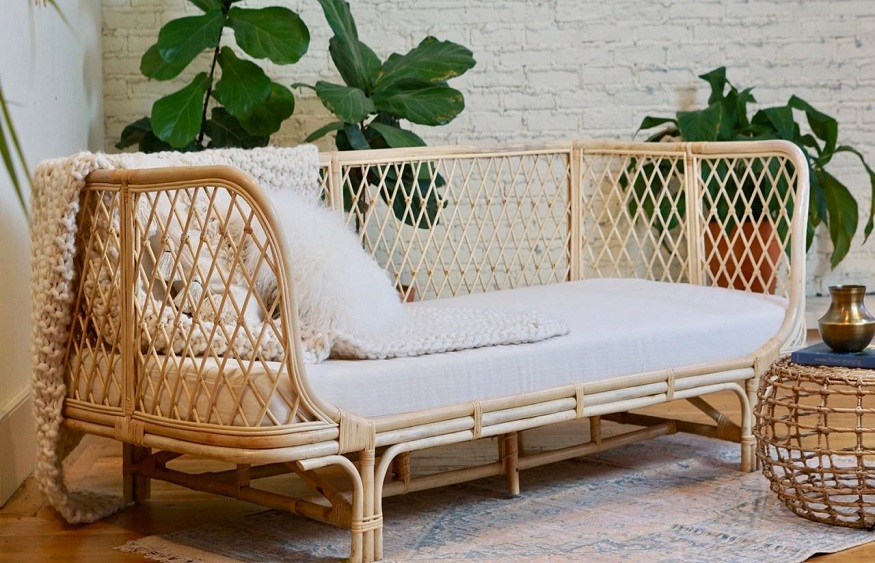
Rattan furniture is an elegant addition to both indoor and outdoor settings. The parts are lightweight, sturdy, and environmentally favourable. Rattan is a vine closely related to tropical palms; it develops into a cane that can be cut into lengths with a sturdy core and steamed into curves. The outer layer of the vine is torn away to create flexible lengths for securing furniture connections.
Since rattan can become brittle or damaged when exposed to heat or moisture, the material must be kept clear and free of grime to last for years.
Weekly Maintenance
1. Remove the Dust
To clear the entire surface of rattan furniture, utilise a microfiber or disposable duster or a vacuum with an upholstery brush. This will prevent the excessive accumulation of soil on the weaving.
2. Eliminate Stains
If there are food stains, liquid spills, or muddy paw impressions on the rattan, they must be removed immediately. Do not attempt to rub away these stains, as doing so will drive the matter deeper into the fabric’s weave.
If solids are involved, remove them from the rattan using a spoon or coarse knife. Once the solids have been removed, clean the area with a moistened microfiber cloth and allow the rattan to air dry.
Use a toothbrush to help remove sediments and other dry stains from rattan. Then, wet a microfiber cloth and apply a small amount of dishwashing liquid to it. Wipe the soiled area clean. Apply a cloth drenched in clean water and enable the area to air dry.
Monthly Maintenance
1. Create a Cleaning Agent
Combine four cups of warm water and one teaspoon of dishwashing liquid in a pail or basin. Stir the water until bubbles appear on the surface.
Add some clean water to a second container for rinsing the cleaning fabric.
2. Cleanse Furniture
Soak a cloth (preferably microfibre) in the cleaning solution and, beginning at the top, wash down the rattan furniture. Rinse the cleansing cloth frequently with clean water and dry it until it is barely damp.
Utilise a toothbrush to eliminate any residue from the weaving. Do not saturate the rattan with excessive water.
3. Allow to Dry
Unless the rattan is excessively damp, let it air-dry. If there is excess water, dry the furniture with a gentle cloth.
Annual Cleaning
Once a year, every cushion should be removed, the furniture should be inspected for damage, and the rattan should be conditioned. Then, follow the weekly and monthly cleaning procedures before commencing the comprehensive annual cleaning.
1. Examine Rattan for Defects
With all of the cushions removed, search for rips and tears. If the furniture has been exposed to various elements, examine the legs for mould and mildew. This is commonly found on the legs.
2. Eliminate Mould and Mildew
If mould is present, combine chlorine bleach and water in equal portions. Put on protective gloves and soak a delicate cloth in the bleach solution before applying it to the affected area. Try not to completely soak the rattan. Then, transfer the item to the sun to dry as rapidly as feasible.
3. Prepare the Rattan
Allow the rattan to dry completely after dusting, treating discolouration, removing mildew, and cleansing with detergent suds. Once dried, condition the rattan by dipping a clean, soft cloth into boiled linseed oil.
Beginning at the top of the piece of furniture to prevent dripping, rub the oiled rattan down. The oil will contribute moisture to the fibres, thereby preventing their destruction. Allow the rattan furniture to dry for at least 48 hours before replacing the cushioning.

